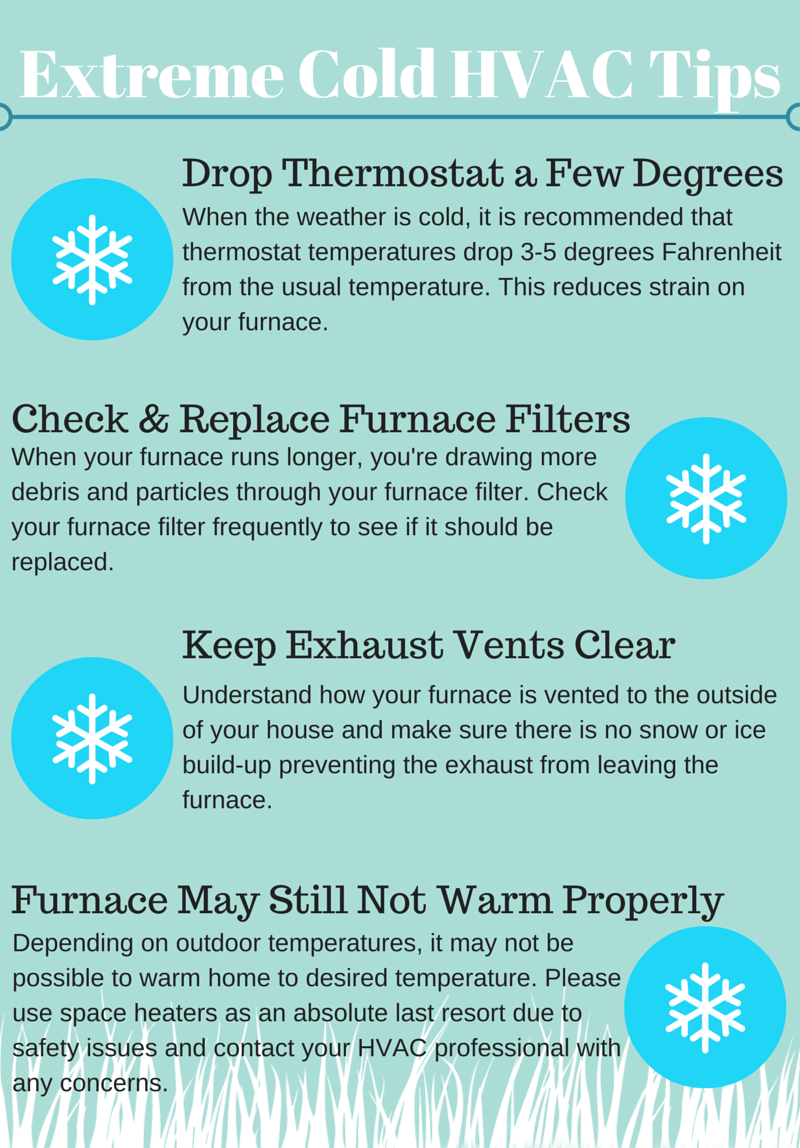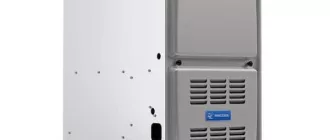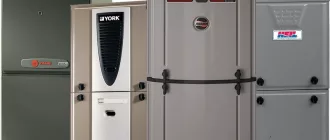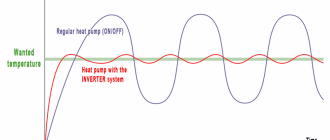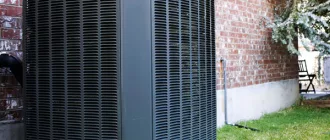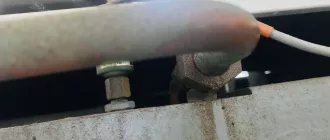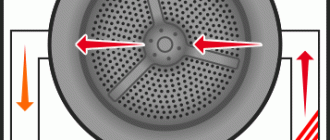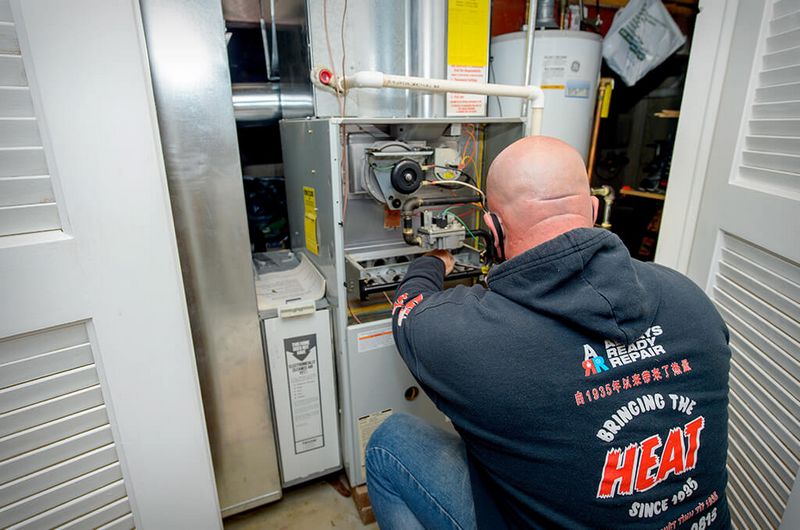
5 Ways to Help Your Furnace During Extreme Cold Weather
During extreme cold weather, it is crucial to take necessary precautions to ensure the proper functioning and longevity of your furnace. Cold weather can put excessive strain on your furnace, leading to potential breakdowns and expensive repairs. To help you avoid these problems, here are five tips to protect your furnace during extreme cold weather:
1. Regularly check and clean the air filters: Cold weather can cause dust and debris to accumulate in the air filters, obstructing the airflow and reducing the furnace’s efficiency. Regularly inspect and clean or replace the filters to ensure optimal performance.
2. Keep the area around the furnace clear: It is essential to maintain a clear space around the furnace to allow proper ventilation and air circulation. Avoid storing items or blocking the vents near the furnace to prevent potential overheating or fire hazards.
3. Schedule annual maintenance: Investing in annual furnace maintenance can help identify and address any potential issues before they escalate into major problems. A professional technician can inspect and tune-up your furnace, ensuring its optimal performance during extreme cold weather.
4. Keep your home well-insulated: Proper insulation is crucial for reducing heat loss and maintaining a comfortable indoor temperature. Insulate your windows, doors, and walls to prevent cold drafts and minimize the workload on your furnace.
5. Install a programmable thermostat: A programmable thermostat allows you to control the temperature of your home, even when you’re away. By setting lower temperatures while you’re out and higher temperatures when you’re home, you can reduce the strain on your furnace and potentially save on energy costs.
By following these five ways, you can help protect your furnace during extreme cold weather, ensuring its reliable operation and prolonging its lifespan. Don’t neglect the importance of furnace maintenance and take proactive measures to keep your home warm and comfortable during the cold winter months.
Ways to Safeguard Your Furnace in Harsh Winter Conditions
In extreme cold weather, your furnace needs extra protection to ensure it functions properly and efficiently. Here are 5 ways to help safeguard your furnace during cold weather.
1. Regular maintenance: Schedule regular maintenance for your furnace to keep it in optimal condition. This includes cleaning the filters, checking for any leaks or cracks, and ensuring proper ventilation.
2. Insulation: Proper insulation is key to protecting your furnace from extreme cold weather. Insulate your home’s walls, attic, and crawlspaces to prevent heat loss and reduce strain on your furnace.
3. Temperature control: Set your thermostat to a reasonable temperature to avoid overworking your furnace. It’s recommended to keep the temperature between 68 and 72 degrees Fahrenheit during the winter months.
4. Airflow maintenance: Ensure proper airflow around your furnace by keeping the area clear of any obstructions or debris. This allows the furnace to function efficiently and prevents overheating.
5. Emergency preparedness: In case of a power outage or furnace failure, it’s important to be prepared. Have emergency blankets, portable heaters, and extra blankets on hand to keep warm until the furnace is back up and running.
By following these steps, you can help protect your furnace and ensure it continues to provide warmth and comfort during the cold winter months.
Insulate Your Home Properly
One of the most important ways to protect your furnace during extreme cold weather is to properly insulate your home. Insulation helps to keep the cold air out and the warm air in, reducing the workload on your furnace and preventing it from overworking or breaking down.
Here are 5 ways to ensure your home is properly insulated:
- Check for air leaks: Inspect your doors and windows for any gaps or cracks that may be letting in cold air. Use weatherstripping or caulking to seal any openings and prevent drafts.
- Insulate your attic: Add insulation to your attic to prevent heat from escaping through the roof. This can help keep your entire home warmer and reduce the strain on your furnace.
- Insulate your walls: Consider adding insulation to your walls, especially in older homes. This can help regulate the temperature inside your home and make it more comfortable during extreme cold weather.
- Seal ductwork: Inspect your ductwork for any leaks or gaps and seal them with duct tape or specialized sealant. This will help to prevent heat loss and ensure that warm air is effectively distributed throughout your home.
- Consider insulating your basement or crawl space: If you have a basement or crawl space, insulating the walls and sealing any gaps can help prevent cold air from seeping into your home from below.
By properly insulating your home, you can protect your furnace from the extreme cold weather conditions, improve energy efficiency, and ensure the comfort of your home during the winter months.
Schedule Regular Furnace Maintenance
Your furnace is a critical component in keeping your home warm during extreme cold weather. To ensure that it operates efficiently and effectively, it’s important to schedule regular furnace maintenance.
Regular maintenance will help identify any issues or problems with your furnace before they become major problems. A professional technician can inspect and clean the various components of your furnace, such as the burners, heat exchanger, blower, and filters.
During extreme cold weather, your furnace is working harder to heat your home. By scheduling regular maintenance, you can help ensure that it is operating at its optimal level, which can help prevent breakdowns and extend its lifespan.
Additionally, regular maintenance can help improve the air quality in your home. A dirty or clogged furnace filter can reduce the airflow and lead to poor indoor air quality. By cleaning or replacing the filter during maintenance, you can help ensure that the air circulating in your home is clean and free of dust and allergens.
To schedule regular furnace maintenance, it’s recommended to contact a professional HVAC technician. They will be able to provide expert service and address any concerns or issues with your furnace. Regular maintenance can help keep your furnace running smoothly and efficiently, providing you with reliable heat during extreme cold weather.
Don’t wait until the cold weather arrives to schedule maintenance for your furnace. Take proactive steps to protect your furnace and ensure it operates at its best during extreme weather conditions.
Use a Programmable Thermostat
One of the most effective ways to protect your furnace during extreme cold weather is to use a programmable thermostat. This device can help regulate the temperature in your home, ensuring that your furnace is not overworked and potentially damaged.
A programmable thermostat allows you to set different temperature settings for various times of the day. This means you can lower the temperature when you are away from home or sleeping, and then have it automatically increase to a more comfortable level when you are awake and present.
By adjusting the temperature settings in this way, you can give your furnace a break during times when it doesn’t need to work as hard. This can not only help prevent excessive wear and tear on your furnace, but also save you money on energy costs.
Additionally, programmable thermostats often come with features that allow you to monitor and control your heating system remotely. This means you can make adjustments to your furnace’s settings even when you are not at home, ensuring that your furnace is running efficiently and effectively.
Overall, using a programmable thermostat is a simple and convenient way to protect your furnace during extreme cold weather. It can help extend the lifespan of your furnace, save you money on energy costs, and provide you with greater control over your home’s heating system.
Keep Vents and Registers Clear
One of the most important ways to help your furnace during extreme cold weather is to keep the vents and registers clear. When the temperature drops, it’s vital that warm air can flow freely through your home. If vents or registers are blocked by furniture, rugs, or other items, it can restrict air circulation and make your furnace work harder to keep your home warm.
Make sure to regularly check all vents and registers to ensure they are clear of any obstructions. Move furniture away from vents or registers and remove any items that may be blocking the airflow. This simple step can help prevent your furnace from overheating and ensure that warm air is distributed evenly throughout your home.
Additionally, it’s important to keep the area around vents and registers clean and dust-free. Dust and debris can accumulate over time and obstruct airflow, reducing the efficiency of your furnace. Regularly vacuum or wipe down vents and registers to keep them clear.
By keeping your vents and registers clear, you can help your furnace operate efficiently and effectively during extremely cold weather. This not only ensures your home stays warm and comfortable, but it can also help prolong the lifespan of your furnace by reducing unnecessary wear and tear.
Remember, taking proactive measures to protect your furnace during extreme cold weather can save you money on energy bills and prevent costly repairs. Consider implementing these five ways to keep your furnace running smoothly and your home warm during the coldest months of the year.
Change Air Filters Regularly
One of the most important things you can do to help protect your furnace during extreme cold weather is to change the air filters regularly. The air filters play a crucial role in the performance of your furnace by trapping dust, debris, and other particles that can enter your system.
When the air filters become clogged with dirt, they can restrict the airflow and make your furnace work harder to heat your home. This can lead to increased energy consumption and reduced efficiency. Therefore, it is essential to replace the air filters every few months or as recommended by the manufacturer.
Regularly changing the air filters not only helps to maintain the efficiency of your furnace but also improves the indoor air quality. Clean filters ensure that the air circulating in your home is free from allergens, dust, and pollutants.
Additionally, changing the air filters regularly can help prevent potential damage to your furnace. When the filters are dirty and the airflow is restricted, the furnace may overheat, leading to unnecessary wear and tear on its components. By keeping the air filters clean, you can ensure that your furnace operates smoothly and efficiently, even during extreme cold weather.
In summary, one of the best ways to protect your furnace during extreme cold weather is to change the air filters regularly. This simple maintenance task can help improve the performance, efficiency, and longevity of your furnace while also providing cleaner indoor air for you and your family.
Install Carbon Monoxide Detectors
One of the most important ways to protect your furnace during extreme cold weather is by installing carbon monoxide detectors in your home. Carbon monoxide is a colorless and odorless gas that can be emitted by faulty furnaces. It is extremely dangerous and can be deadly if inhaled in high concentrations.
By installing carbon monoxide detectors, you can ensure that you and your family will be alerted if there are any potential leaks from your furnace. These detectors work similarly to smoke alarms, and they will emit a loud alarm if they detect high levels of carbon monoxide in the air.
When installing carbon monoxide detectors, it’s important to place them in key locations throughout your home. They should be installed near bedrooms, as well as in the basement near the furnace. Make sure to follow the manufacturer’s instructions for proper installation.
In addition to installing carbon monoxide detectors, it’s also crucial to regularly check and replace the batteries in these devices. It’s recommended to test your detectors monthly to ensure they are functioning properly. If the alarm sounds, evacuate your home immediately and contact emergency services.
Remember, extreme cold weather can put a strain on your furnace and increase the risk of carbon monoxide leaks. By installing carbon monoxide detectors and regularly maintaining them, you can protect yourself and your family from this potential danger.
| Alerts in case of leaks | Carbon monoxide detectors will sound an alarm if high levels of gas are detected, preventing potential exposure. |
| Proper placement | Install detectors near bedrooms and in the basement near the furnace to ensure optimal coverage. |
| Regular maintenance | Check and replace batteries regularly, and test detectors monthly to ensure they are working correctly. |
Consider a Backup Power Generator
In extreme cold weather, power outages can be common, and losing electricity can lead to a failed furnace. To help protect your furnace and keep it running during these times, it’s a good idea to consider investing in a backup power generator.
A backup power generator can ensure that your furnace continues to work even if the power goes out. This can help prevent the risk of frozen pipes and other potential damages that can occur when the furnace stops working in extremely cold temperatures.
There are different types of backup power generators available, such as portable generators or whole-house standby generators. Portable generators can be moved around and can power specific appliances or devices, including your furnace. Whole-house standby generators are permanently installed and can provide power to your entire home, including the furnace.
When choosing a backup power generator, it’s important to consider the wattage and capacity to ensure that it can handle the power requirements of your furnace. Consulting with a professional or an electrician can help you determine the appropriate generator size for your specific needs.
In addition to protecting your furnace during extreme cold weather, a backup power generator can also provide peace of mind, knowing that you have a reliable source of power in case of an emergency or power outage.
Investing in a backup power generator is one of the best ways to protect your furnace and ensure that it continues to work efficiently during extreme cold weather conditions. It’s a valuable investment that can help prevent costly damages and keep your home comfortable and safe.
Keep the Furnace Room Clean and Clutter-free
During extreme cold weather, it is important to ensure that your furnace is operating at its peak performance to keep your home warm and comfortable. One of the ways to help maintain the efficiency of your furnace is by keeping the furnace room clean and clutter-free.
When the furnace room is cluttered, it can impede the airflow and circulation of warm air, causing your furnace to work harder and consume more energy. Additionally, clutter can also pose a fire hazard, as it increases the risk of flammable materials coming into contact with the furnace or its components.
To avoid these issues, take the following steps to keep your furnace room clean and clutter-free:
| 1. Regularly clean the furnace room: | Remove any dust, debris, or cobwebs that may have accumulated in the furnace room. Use a vacuum cleaner or a damp cloth to wipe down the surfaces and ensure that the area is free from any obstructions. |
| 2. Organize and declutter: | Keep the furnace room organized by arranging tools, equipment, and other items in designated storage areas. Avoid storing any flammable materials or chemicals in the furnace room to reduce fire hazards. |
| 3. Ensure proper ventilation: | Clear any blocked vents or air registers in the furnace room to ensure proper airflow and ventilation. This will help the furnace operate efficiently and prevent overheating. |
| 4. Check for leaks: | Inspect the furnace room for any signs of water leaks or moisture buildup. Address any leaks promptly to prevent damage to the furnace and other equipment in the room. |
| 5. Schedule regular maintenance: | Regularly hire a professional technician to inspect and maintain your furnace. They can identify and address any issues that may arise, ensuring that your furnace operates efficiently and safely. |
By keeping the furnace room clean and clutter-free, you can help prolong the lifespan of your furnace and prevent any potential safety hazards. Remember to prioritize the maintenance and care of your furnace to ensure its optimal performance during extreme cold weather.
Monitor Indoor Humidity Levels
One of the most important ways to protect your furnace during extreme cold weather is to monitor indoor humidity levels. When the weather outside is cold, the air inside your home can become dry, which can cause your furnace to work harder and potentially lead to damage.
By keeping an eye on the humidity levels in your home, you can help ensure that your furnace is operating efficiently and prevent any unnecessary strain on the system. The optimal indoor humidity level is between 30% and 50%. If the humidity falls below this range, you may need to use a humidifier to add moisture to the air.
Excessively high humidity can also be a problem, as it can create a breeding ground for mold and bacteria. If the humidity exceeds 50%, you may need to use a dehumidifier to remove the excess moisture from the air.
Monitoring the indoor humidity levels can be done using a hygrometer, which is a device that measures the amount of moisture in the air. Place the hygrometer in a central location in your home, away from direct sources of moisture such as showers and humidifiers. Check the readings regularly and make adjustments as needed to maintain the optimal humidity level.
By monitoring indoor humidity levels, you can help protect your furnace and ensure that it continues to function effectively during extreme cold weather.
Avoid Setting the Thermostat Too High
When it’s bitterly cold outside, it can be tempting to crank up the heat and set your thermostat too high. However, this can actually harm your furnace, increasing the risk of a breakdown.
Here are 5 ways to protect your furnace during extreme cold weather:
- Regularly change your furnace filters to ensure proper airflow and prevent the system from working harder than necessary.
- Install a programmable thermostat to regulate the temperature more efficiently and save energy.
- Keep the area around your furnace clear of any obstructions to allow for proper ventilation and prevent overheating.
- Seal any air leaks in your home to prevent drafts and maintain a consistent temperature, reducing the strain on your furnace.
- Schedule regular maintenance for your furnace to keep it running smoothly and address any potential issues before they become major problems.
Following these tips will not only help protect your furnace, but also improve its efficiency and extend its lifespan. Don’t let the cold weather compromise the performance of your furnace!
Check for Drafts and Seal Leaks
During extreme cold weather, it is important to protect your furnace to ensure it continues to function efficiently. One way to help with this is to check for drafts and seal any leaks in your home.
Drafts can allow cold air to infiltrate your living space, making your furnace work even harder to maintain a comfortable temperature. This can lead to increased energy consumption and higher heating bills. By checking for drafts and sealing any leaks, you can help ensure that your furnace is not working overtime.
Here are five steps to help you check for drafts and seal leaks:
- Inspect windows and doors for any gaps or cracks. Use weatherstripping or caulk to seal these areas.
- Check the areas around electrical outlets and light switches. Install foam gaskets behind them to reduce drafts.
- Examine the baseboards and moldings for any gaps. Fill these with caulk or putty to prevent air leaks.
- Inspect the attic and basement for any openings or cracks. Use spray foam insulation or weatherstripping to seal these areas.
- Consider using draft stoppers or door sweeps to seal any gaps under exterior doors.
By taking the time to check for drafts and seal leaks in your home, you can help improve the efficiency of your furnace and keep your living space warm during extreme cold weather. This can ultimately save you money on energy costs and prolong the lifespan of your furnace.
Keep an Eye on Outdoor Ventilation
During extreme cold weather, it is important to pay attention to the outdoor ventilation of your furnace. Here are 5 ways to help protect your furnace:
- Clear any snow or ice that may be blocking the outdoor vents. This can restrict airflow and cause your furnace to work harder than necessary.
- Inspect the vent pipes for any signs of damage or blockage. Look for cracks, dents, or debris that could be obstructing the flow of exhaust gases.
- Ensure that the vent pipes are properly insulated to prevent heat loss. This will help your furnace operate more efficiently and reduce the risk of freezing.
- Keep an eye on the vent pipes during extreme cold weather to make sure they are not becoming clogged with ice or snow. If necessary, gently remove any build-up to maintain proper ventilation.
- If you notice any issues with the outdoor ventilation of your furnace, contact a professional HVAC technician for assistance. They will be able to assess the situation and make any necessary repairs.
By following these 5 tips, you can help protect your furnace during extreme cold weather and ensure that it continues to operate efficiently.
Provide Adequate Clearance Around the Furnace
In extreme cold weather, your furnace needs proper airflow to operate efficiently and safely. One of the best ways to ensure this is by providing adequate clearance around your furnace. Here are five ways that can help:
1. Clear the Area: Make sure there is no clutter or obstructions around your furnace. Remove any items such as boxes, tools, or furniture that may be blocking the airflow. Keep a clear space of at least three feet around the furnace.
2. Clean the Air Vents: Check and clean the air vents regularly to prevent any blockage or dust buildup. Restricted airflow can put extra pressure on your furnace and reduce its efficiency. Use a vacuum or a brush to remove any dust or debris from the vents.
3. Insulate the Ductwork: Insulating the ductwork can help maintain the temperature of the air as it travels from the furnace to different parts of your home. Proper insulation can prevent heat loss and reduce the strain on your furnace, especially during extremely cold weather.
4. Check for Leaks: Inspect the areas where the furnace exhaust pipe and air intake pipe connect to your home. Any gaps or leaks in these areas can allow cold air to enter or warm air to escape, making your furnace work harder. Seal any gaps or cracks using appropriate sealants or caulking.
5. Schedule Regular Maintenance: Regularly maintain your furnace by scheduling professional inspections and tune-ups. This can help identify any potential issues or malfunctions and ensure that your furnace is running efficiently during extreme cold weather. A well-maintained furnace is less likely to breakdown when you need it the most.
By providing adequate clearance around your furnace, you can help it operate effectively and avoid unnecessary strain during extreme cold weather. Remember to keep the area around your furnace clutter-free, clean the air vents, insulate the ductwork, check for leaks, and schedule regular maintenance to keep your furnace in top condition.
Prepare an Emergency Heating Plan
During extreme cold weather, it is crucial to have a plan in place to ensure the safety and functionality of your furnace. Here are 5 ways to help you prepare an emergency heating plan:
1. Keep your furnace well-maintained: Regularly inspect and service your furnace to ensure it is in good working condition. Replace filters as needed and clean the vents to ensure proper airflow.
2. Stock up on emergency heating supplies: Make sure you have enough fuel, such as propane or wood, to keep your furnace running in case of a power outage. Consider having an alternative heating source, such as a generator or space heater, as a backup.
3. Insulate your home: Properly insulate your windows, doors, and walls to prevent heat loss. Use weatherstripping and caulk to seal any gaps or leaks. Consider adding insulation to your attic to further improve energy efficiency.
4. Install a programmable thermostat: A programmable thermostat allows you to set the temperature of your home based on your schedule. Lowering the temperature when you are away or sleeping can help save energy and reduce the strain on your furnace.
5. Create an emergency heating plan: Discuss with your family the steps to take in case of a furnace failure or power outage. Know where to find emergency supplies and make sure everyone understands how to stay warm and safe during extreme cold weather.
By implementing these 5 ways, you can protect your furnace and ensure your home remains warm and comfortable during extreme cold weather.
Seek Professional Help for any Furnace Issues
In extreme weather conditions, it is crucial to ensure that your furnace is in optimal condition to provide proper heating. If you encounter any issues with your furnace during this time, it is recommended to seek professional help immediately. Here are 5 ways professional assistance can help you keep your furnace running smoothly during extreme weather:
| 1. | Expert Diagnosis | A professional HVAC technician can accurately diagnose any issues with your furnace. They have the knowledge and experience to identify potential problems and provide appropriate solutions. |
| 2. | Timely Repairs | Professional help ensures that any necessary repairs are carried out promptly. This minimizes the risk of further damage to your furnace and ensures that it continues to operate efficiently. |
| 3. | Preventive Maintenance | Regular maintenance by professionals can help prevent unexpected breakdowns. They can conduct thorough inspections and perform necessary cleaning, lubrication, and adjustments to keep your furnace in optimal condition. |
| 4. | Improved Efficiency | Professional assistance can help optimize the efficiency of your furnace, reducing energy consumption and lowering your utility bills. |
| 5. | Safe Operation | Professionals ensure that your furnace operates safely. They can identify any potential safety hazards and take appropriate measures to mitigate them, protecting your home and family. |
In conclusion, seeking professional help for any furnace issues during extreme weather is crucial to ensure the proper functioning, efficiency, and safety of your heating system. Don’t hesitate to reach out to a qualified HVAC technician if you experience any problems with your furnace.
Q&A:
What are some ways to protect my furnace during extreme cold weather?
Some ways to protect your furnace during extreme cold weather include: keeping the area around the furnace clear of debris and clutter, checking and replacing air filters regularly, scheduling regular maintenance and inspections, insulating the ductwork, and keeping the thermostat at a reasonable temperature.
Why is it important to keep the area around the furnace clear of debris and clutter?
It is important to keep the area around the furnace clear of debris and clutter because it allows for proper airflow. If the area is blocked, the furnace may not function efficiently and it could potentially overheat or not produce enough heat to keep your home warm.
How often should I check and replace the air filters in my furnace?
You should check and replace the air filters in your furnace at least once every three months, or more frequently if you have pets or a lot of dust in your home. Clogged or dirty air filters can restrict airflow and cause the furnace to work harder, potentially leading to damage or a decrease in efficiency.
Why is it important to schedule regular maintenance and inspections for your furnace?
Scheduling regular maintenance and inspections for your furnace is important because it helps ensure that your furnace is in good working condition and can prevent potential issues from arising. A professional technician can clean and inspect the furnace, identify any problems or areas of concern, and make necessary repairs or adjustments before they become major, costly issues.

